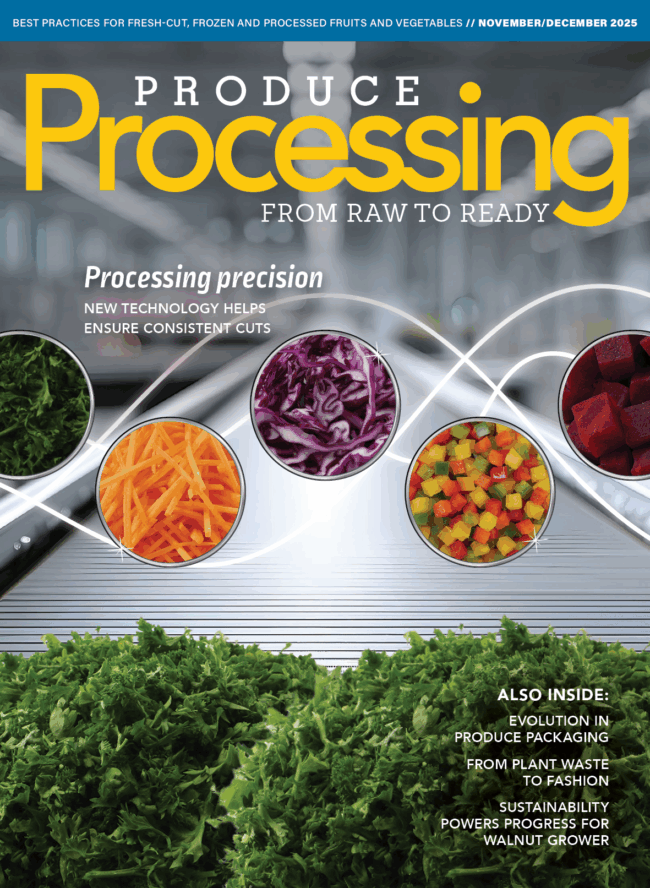Packaging sustainability push driving change, creating challenges
In recent years, there has been a shift in the types of packaging used by food manufacturers, emphasizing the importance of finding sustainable solutions.
As new legislation makes producers responsible for the entire lifecycle of their products, manufacturers seek new solutions that reduce waste.
Legislation drives change
First implemented in the European Union, Extended Producer Responsibility (EPR) is a legislative tool that makes producers responsible for the lifecycle of their products. EPR laws apply to any product placed on the market, including packaging and packaging waste.
EPR legislation has made its way into the U.S. In 2021 and 2022, seven U.S. states — California, Colorado, Maine, Oregon, Minnesota, New Jersey and Washington — passed packaging laws.

Maine was first to implement EPR laws when it passed an act to support and improve municipal recycling program and save taxpayer money in July 2021. A month later, Oregon became the second U.S. state to pass packaging laws, followed by Colorado and California in June 2022.
California’s Plastic Pollution Prevention and Packaging Producer Responsibility Act set ambitious goals for improving the recyclability and compostability of packaging, and for reducing the single-use plastic waste. By 2032, the law requires 100% of packaging in the state to be recyclable or compostable; 65% of all single-use plastic packaging to be recycled; and a 25% reduction in plastic packaging. To meet these demands, food manufacturers will have to tackle several hurdles.
Challenges and opportunities
A 2022 report on “The Future of Packaging and Sustainability,” issued by the Association for Packaging and Processing Technologies (PMMI), makes it clear that plastic is the most controversial material, with a big push to end single-use and increase the use of paper and other alternatives. The report indicated the use of new packaging solutions are supported by consumers.
Food manufacturers expressed the need for a steady supply of competitively priced, full-circle solutions that meet individual and EPR goals.
The report also found that there is demand for harmonized legislation to drive long-term changes.

In Canada, EPR law requires obligated producers to join Producer Responsibility Organizations (PROs), report packaging data and pay fees to sell their products in most provinces.
The introduction of these laws has created challenges for food manufacturers, said Martin Gooch, CEO for Value Chain Management International, a global consulting company that helps agri-food businesses enhance long-term profitability and environmental sustainability. If enacted as initially intended, he said, the proposed policies will lead to increased prices to consumers, reduced choice and availability of food and increased environmental impacts.
Leonardo Giglio, CEO of Tempo Flexible Packaging, agreed, adding that some policies are not evidence-based and come into force for political rather than practical reasons.
“Common household perceptions about plastics are completely inaccurate,” he said. “At least the silver lining could be potentially good data should drive good decision-making.”
Sarah Acchion, procurement manager, Italpasta, reiterated the important role packaging plays in reducing food waste due to damage, and its role in protecting products from contamination. Packaging also enables efficient transport and provides a space for food manufacturers to share important product information on shelf life and allergens, she said.
Much of the flexible packaging used in food manufacturing is either polyethylene or polypropylene. Both of these materials are recyclable in theory. Logistically, however, this comes down to the individual municipality’s ability to recycle it, and many in Canada do not have the infrastructure in place to do so, said Acchion. This challenge is not confined to Canada, said Gooch.

Potential solutions
Bioplastics have often been seen as a viable solution. But Giglio said this solution also raises other challenges. Bioplastic doesn’t magically disappear — “it still acts like plastic,” he said.
“I think there’s some great potential for very niche markets,” he added. “However, typically, it’s at a pretty massive cost to (the) manufacturer, and it doesn’t seem to be a great solution for most applications in the food industry.”
As a food manufacturer, Acchion agrees.
“We have seen anywhere from a minimum of a 30% increase in packaging upwards of 80%,” she said.
Furthermore, changing packaging lines can be very cumbersome, especially for companies that don’t have a dedicated R&D team, she added.
Gooch added that a less-talked-about challenge is the lack of regulations surrounding labeling that goes on packaging.
“You can have the most recyclable packaging possible, but you apply a certain adhesive or a certain ink to it, and immediately it becomes unrecyclable,” he said. “We have no regulation surrounding that.”
Gooch said the most exciting opportunities are those that are achievable today. He recommended industry focus on simplifying and segregating the types of plastics used, especially those used for food, and segregating and preventing certain types of inks and adhesives being applied to food packaging.
“We need greater alignment between governments to enable an efficient, effective blue box system and recapture system,” he said. “I can put plastic in my blue bin that someone else in the next region cannot. It is utterly stupid. We need one system, one set of standards.”
Harmonization is also important to Giglio.
“It’s confusing for consumers if I move from one municipality to another,” he said. “The reality is most brand owners are doing business outside of one municipality, and it’s really hard if you’re trying to create a packaging format across multiple provinces with multiple standards.”
The shift towards the adoption of more sustainable packaging is well on its way, but it’s clear there are several barriers to adoption, as well as potential consequences should legislation push for change before viable and science-based solutions are readily available. Done too quickly and without proper data to back up the transition, the move could inflate prices for consumers, reduce choice and availability of food and increase environmental impact.










